Best Wild Foods: Guide To Harvesting and Preserving
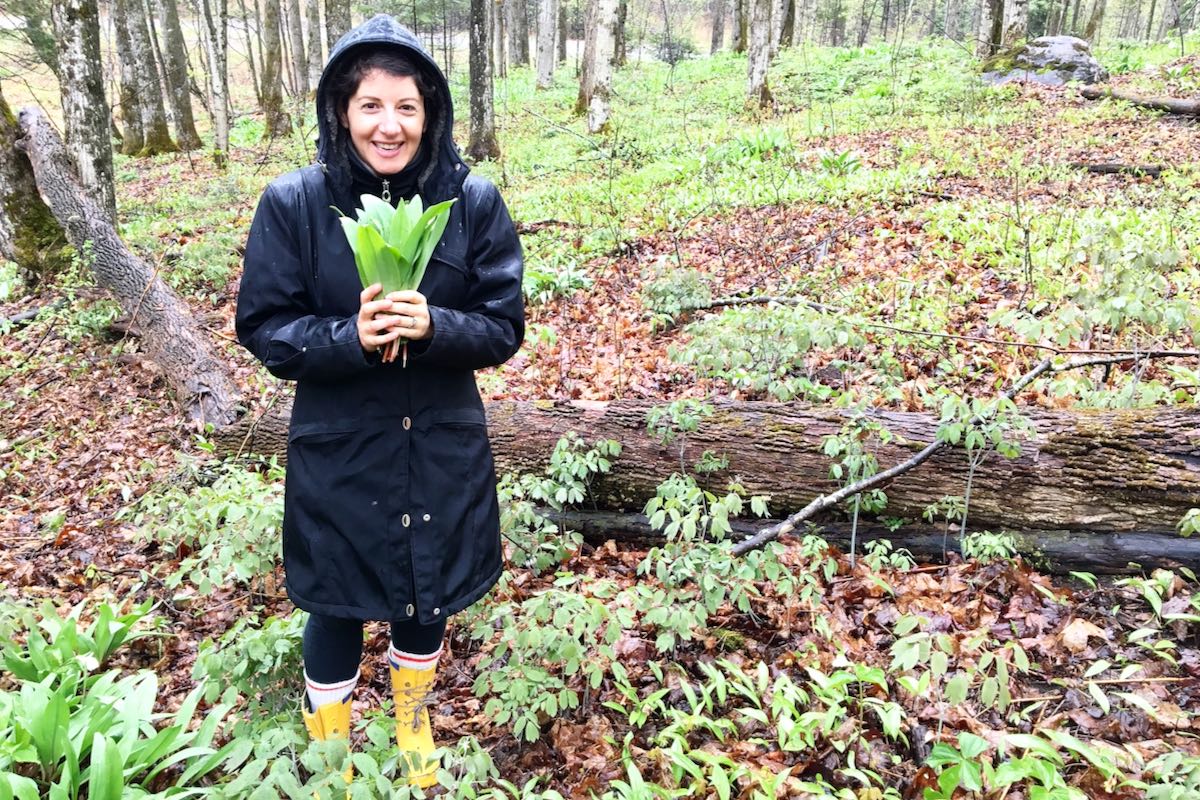
Though I have long been a fan of farmers’ markets and local awesomeness when it comes to food, it’s only in the last few years that I have come to see, learn about, and eat the amazing abundance of wild foods that are growing all around us.
Now, if you ask me, a food qualifies as wild when the seeds plant themselves and a new edible plant grows. So while it’s true that daylilies appear in my front yard here in Toronto, these were planted. That being said, they aren’t really any different from the ones that grow along the dirt roadside up in Northern Ontario where my cottage is. The main difference is that I would eat one and not the other (more details on why below).
So yes, some connoisseurs of wild foods may strongly differentiate between the wilds that actually grow wild and those that we plant as decorative but are actually edible.
In the past, I have written extensively about my favourite wild foraged foods, including:
- Mint
- Elderberries
- Blackberries + raspberries
- Blueberries
- Chaga mushroom
- Reishi mushroom
- Stinging nettle
- Wild leeks
Of course, wild foods vary depending on where you live, and your favourites may be entirely different than the ones I’ve listed above.
In the last few years, I have also spent a considerable amount of time growing my own ‘wild’ foods in my garden and even indoors in my kitchen. These may not technically be ‘wild’, but we have had new seeds plant themselves from existing plants and it’s been incredible to witness things growing in the ‘wild’ of our backyard.
Benefits of Wild Foods
Wild foods need to be able to sustain themselves in the wild, without the help of farmers or chemicals. Generally, wild foods are:
- free of chemicals and pesticides, as they grow naturally and are untreated.
- rich in nutrients, as the plant needs to produce its own phytochemicals to protect itself (these are what we call antioxidants – as just one example, wild blueberries contain more antioxidants than cultivated)
- supportive to the surrounding ecosystem, living in synergy with other plants, insects, and animals
Eating on the Wild Side by Jo Robinson is a great book if you want to learn more about this.
9 Important Guidelines When Harvesting Wild Foods
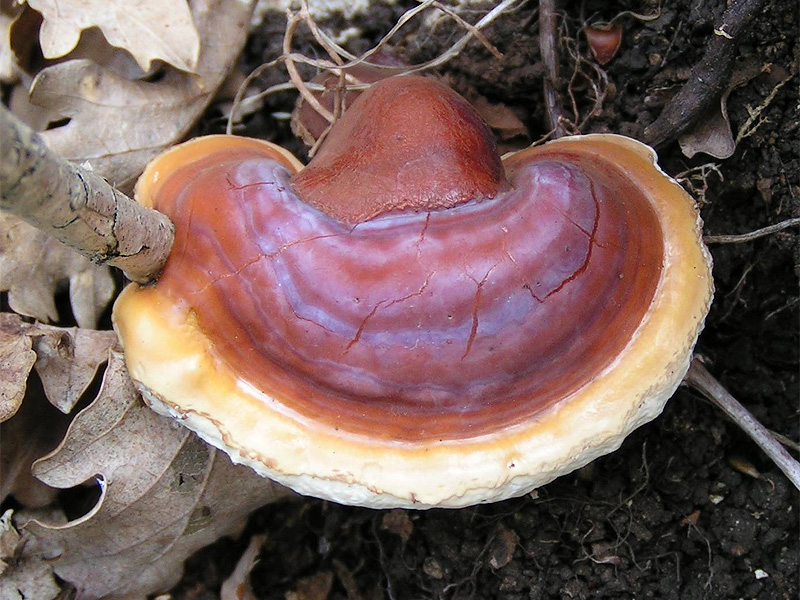
If you’d like to start exploring and foraging wild foods in your area, there are a few key guidelines you want to follow to ensure you protect your health and ensure the wild foods continue to propagate year after year.
1. Open your eyes.
Start to pay attention to the weeds, herbs, and other plants that grow in your neighbourhood. You might even want to ask around at your local farmers’ market to see if anyone is offering tours. This is a great way to kickstart the process so that you can head out with confidence.
2. Get some wild food resources.
Pick up two or three books on your local ecosystem’s wild foods. This is a great starting place. It’s ideal to have a book with pictures that show you close-up details of different parts of the plant: the stem, leaves, fruit, and/or bloom. These will help you positively identify what you’re looking at.
3. Make friends with the plants.
Once you identify a plant, get to know it! What other plants does it form communities with (like what other plants are often found nearby)? Is it native or invasive? Does it give nutrients to the earth or take from it?
4. Identify with confidence.
Learn to identify the poisonous plants you are likely to encounter. This is important! It’s also important to take note of the plants that have edible or medicinal versions and poisonous versions. Do not eat anything you cannot 150% identify as safe (see point 5). Non-edible look-alikes can fool you. Shapes of leaves can be a helpful guide.
5. And then double-check.
Ensure that you can positively identify the plant in at least 2 different resources.
There is an old saying that there are old mushroom hunters and there are bold mushroom hunters, but there are no old, bold mushroom hunters. Always be cautious, or go foraging with an expert!
6. Don’t be greedy!
Be sure you check what plants are endangered in your area. It’s not just bad for the environment, it’s also illegal. Don’t get locked up for harvesting wild leeks! Something super cool you can do with endangered plants is to start sowing their seeds to help the plants regenerate themselves.
7. Take only what you need.
A lesson for life, really! Only pick as much as you need and never take ALL the plants of any one kind in a given patch.
8. Move around.
As you are harvesting, don’t ever pick an area bare. Pick a small amount from a few different patches and give the areas you have picked a few seasons to recover. Be very careful when harvesting roots as you are taking the whole shebang, which means the death of that plant.
9. Stay away from roadsides and public parks.
Wild harvesting in parks is not just illegal, but also potentially toxic. Same goes for most wild foods in cities and beside major roads. One of the best things about wild foods is how nutrient-packed they are. Don’t let that dose of medicine be tainted by pesticides, herbicides, fertilizers, car exhaust, etc.
When To Harvest
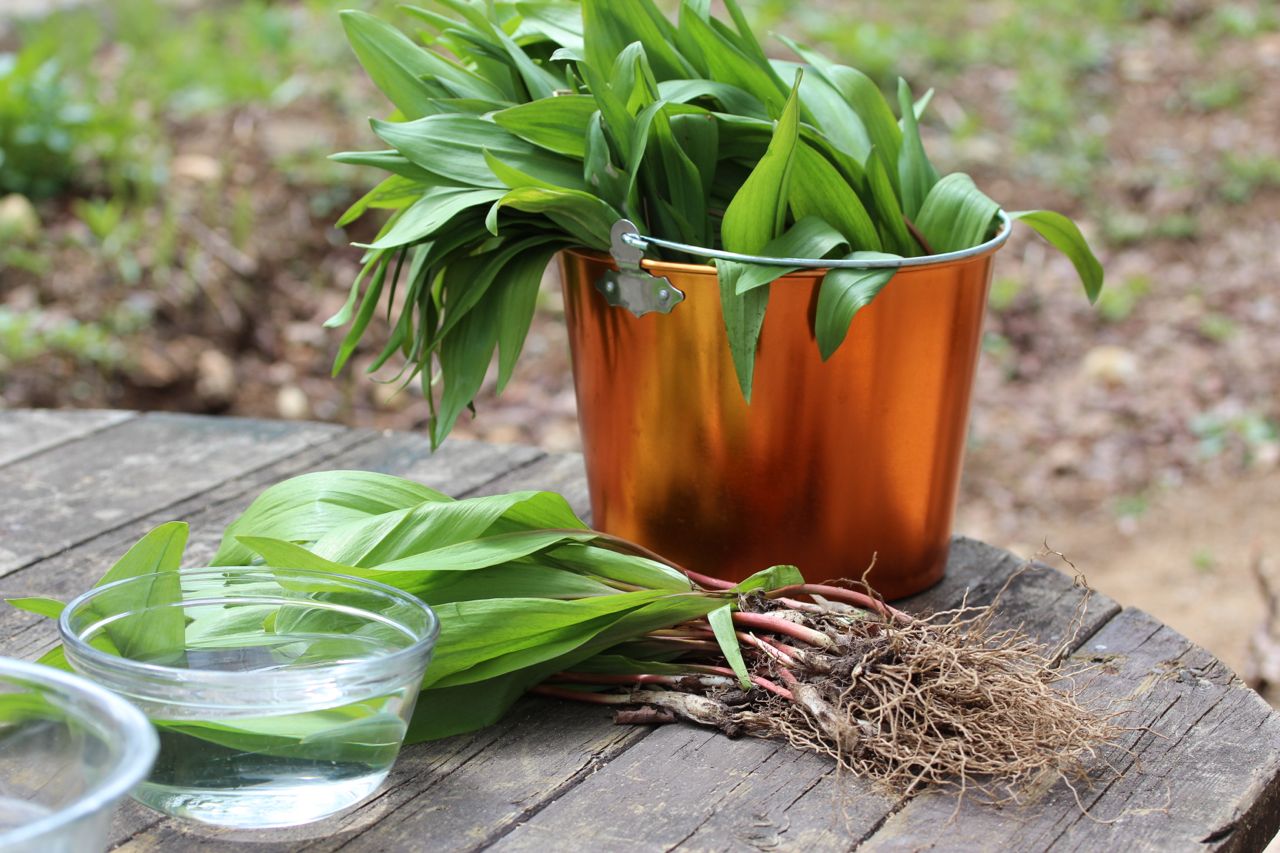
The best time to harvest wild foods depends on the part of the plant you will be using.
- Leaves: Harvest the foliage before they flower. This is how you will maximize the nutritional benefit.
- Flowers: You want to harvest the flowers (like dandelion, chamomile, or daylilies) just before they reach their maximum size.
- Roots: Harvest roots such as burdock, chicory, or goldenseal in the autumn after the foliage fades.
how to use and/or preserve your wild foods
As for the daylilies that are growing like weeds in my province, I plucked some unopened daylily buds and set up to preserve them.
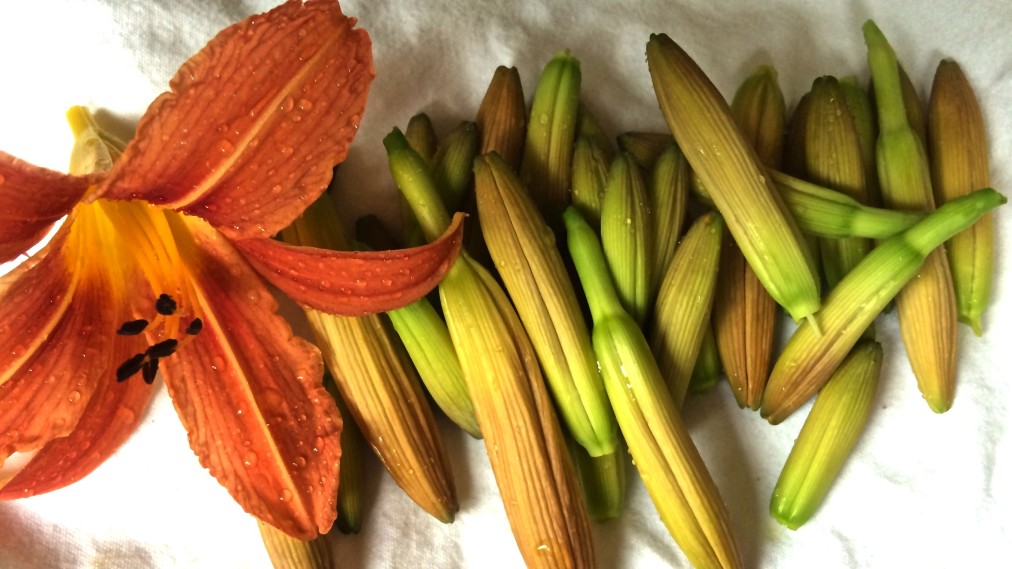
Daylilies are just beautiful and like all wild foods, these have some pretty rock star health benefits, too! Daylily flowers are said to be rich in protein and the closed buds high in Vitamin C and beta carotene.
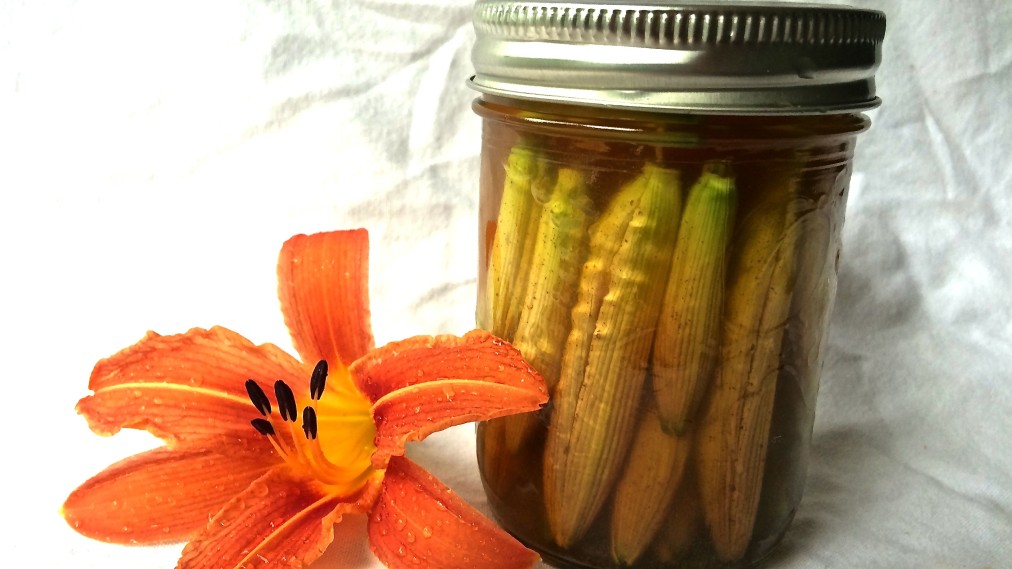
To preserve the buds, I simply washed them and placed them in a 250ml mason jar. I then filled the jar with apple cider vinegar. I will leave them in here for 2–3 months and then enjoy. Easy as that!
Other ways to preserve or use wild foods include:
- tinctures
- teas
- infused honey
- infused oils
- beauty care products
If you’re looking for more ways to use wild foods and herbs, I teach a bunch of easy herbal applications in Everyday Herbal, my self-paced online course that takes the overwhelm out of herbal medicine.
As much as I love when you send me photos of the foods you find to help identify, I am not an expert on wild foods. A book is likely your best first step.
What I’d like to know is what you’re finding! Share in the comments below your favourite wild foods growing in your neighbourhood!
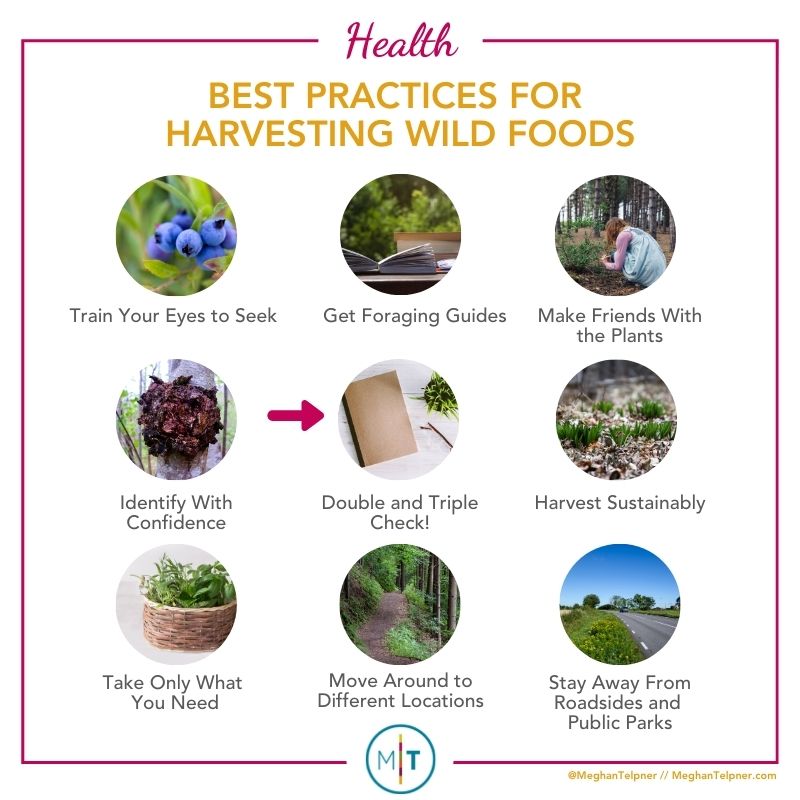
Free Resource Library
Enjoy more than 40 downloadable guides, recipes, and resources.















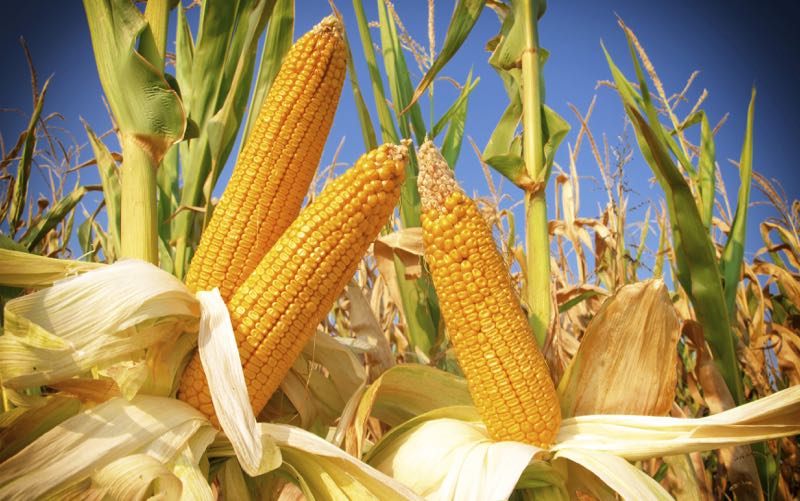
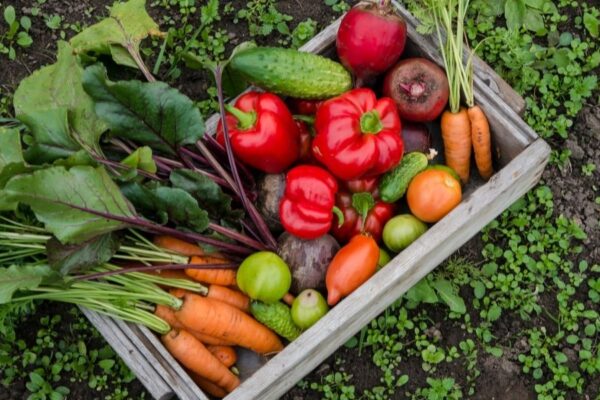
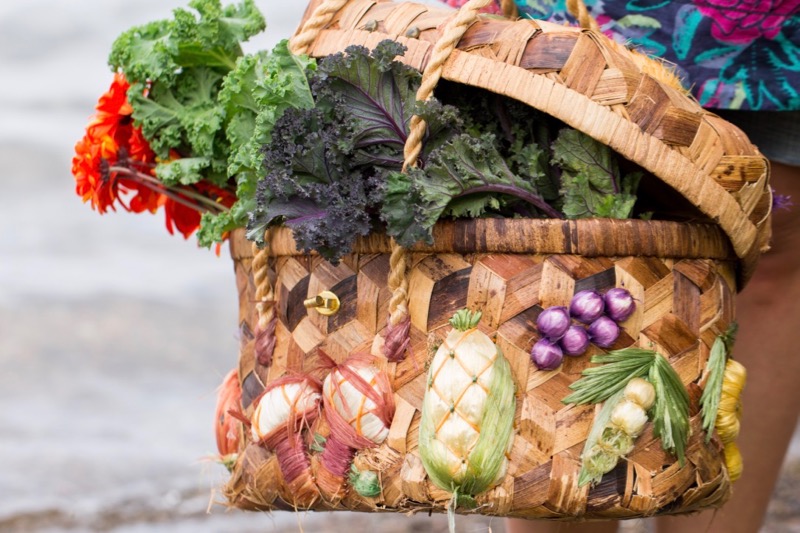
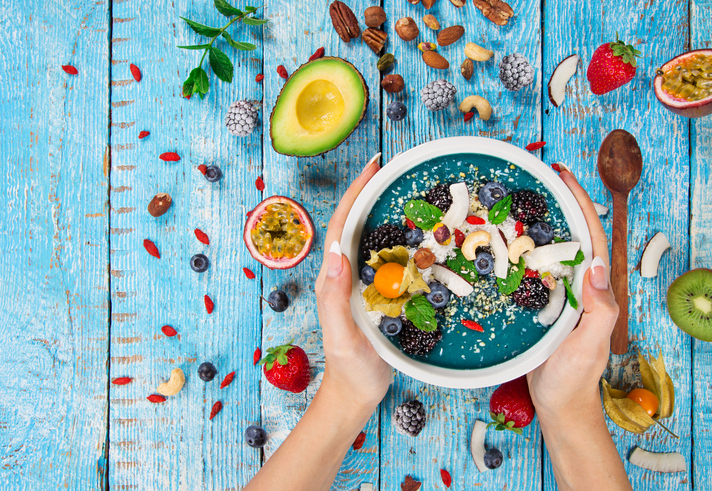
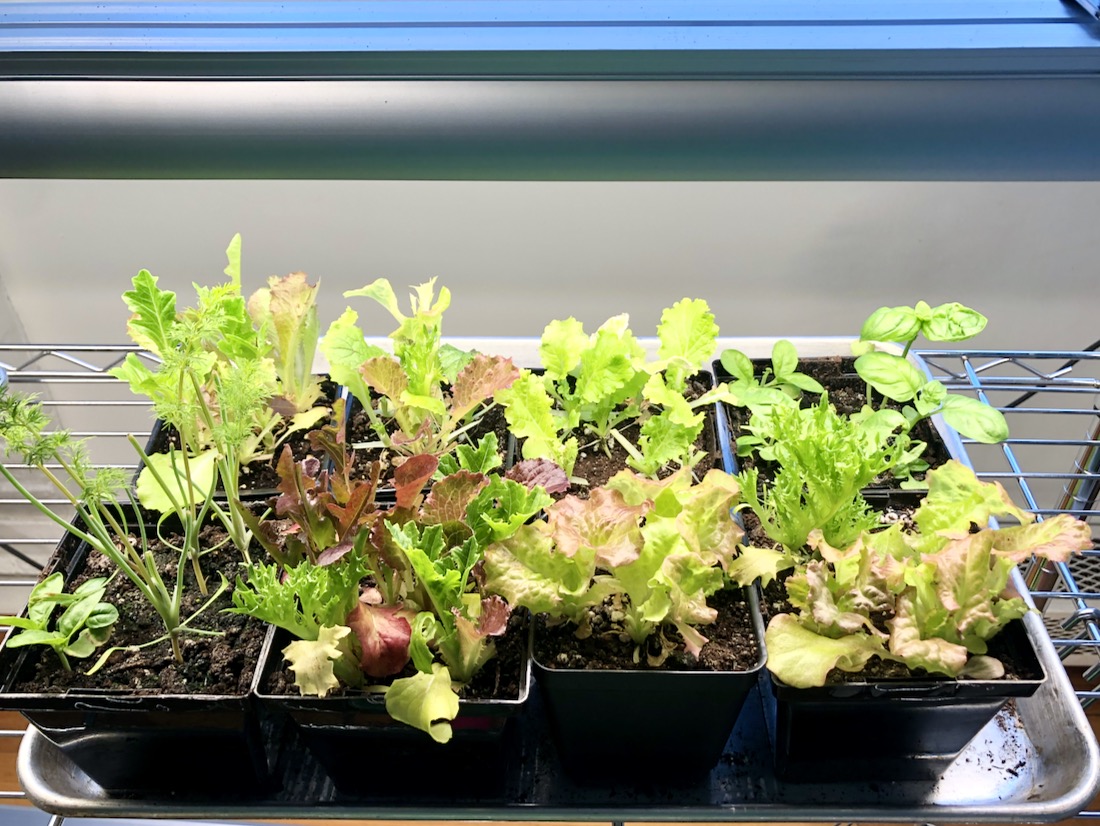
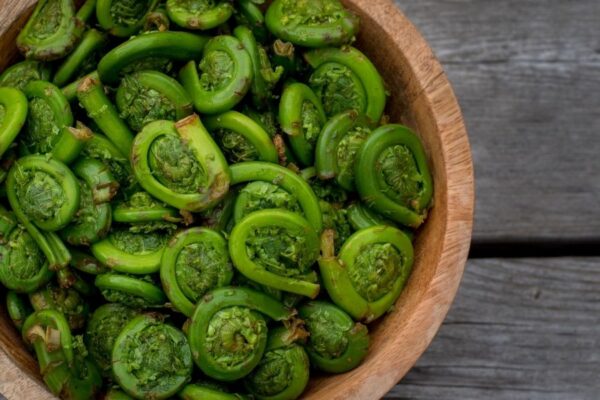
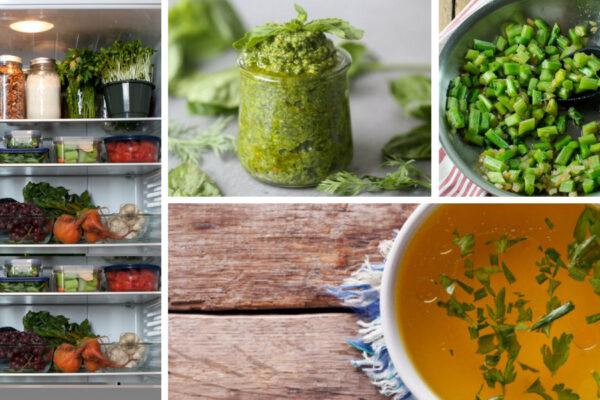
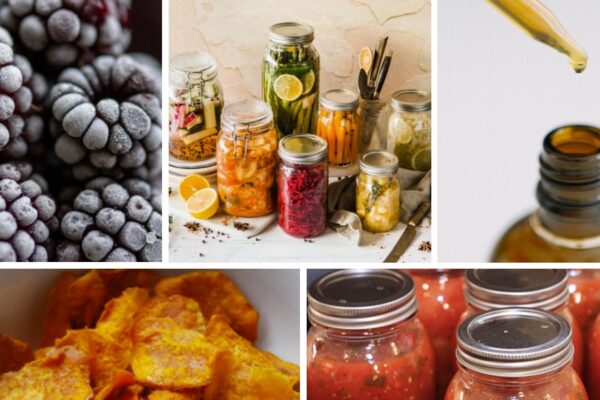
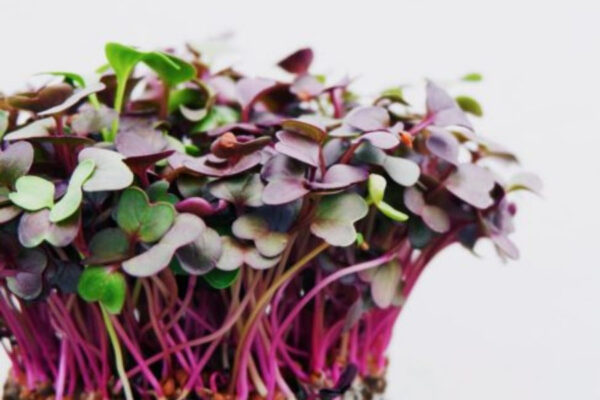
We back onto a ravine where we find lots of raspberries, blackberries and fiddleheads. A couple of years ago I also discovered an amazing little berry called a thimbleberry. Kind of like a raspberry, but darker and flatter. They grow like crazy around here!!
I absolutely love that you’ve done this topic!! This is one of the things that I’ve told myself I am now going to learn as much about as I can. I’ve bought and loaned books, I’m making notes and comparing. I haven’t picked anything yet, just walked around in a few different areas to see what is out there. I need to learn more before I choose.
Garlic mustard grows in many people’s backyards in the GTA. If you pick it before it flowers it makes a great pesto with sunflower seeds, garlic and olive oil!
I’ve just recently been noticing wild edibles like lamb’s quarters and enjoyed my first taste of fresh day lily! I’d love to learn more, what is the book you try to link to in 2. Get some resources? I’ve tried a few times but it’s not going through. Thanks! :)
In western Washington, where I grew up, huge blackberry bushes grow wild. Ripening in late July and August, the berries make great pies or jam, and are perfect just for eating out of hand. Here in southern California, on the Palos Verdes Peninsula, you find native prickly pear cactus on the hillsides; in my yard I find once-planted-but-now-propagating-wildly nasturtium and mint. I use the nasturtium leaves to replace part of the basil in my homemade pesto, and the mint is perfect in quinoa tabbouleh.